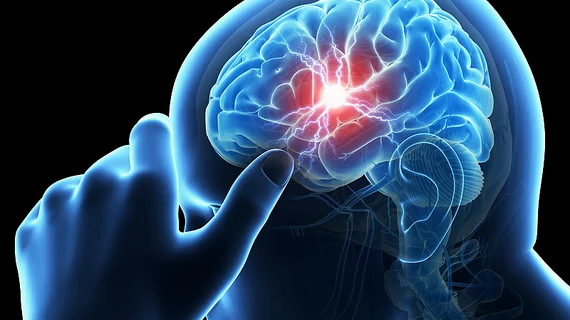Doctors know best: Taking medications as recommended boosts survival for stoke patients
Patients who take medications as prescribed after surviving their first-ever stroke or transient ischemic attack (TIA) can improve their chance of survival, according to new findings published in Stroke.
"Real-world data are essential for generating complimentary evidence of treatments in diverse patient groups and settings to support clinical decision-making," wrote first author Lachlan L. Dalli, a researcher at Monash University in Australia, and colleagues.
Using data from the Australian Stroke Clinical Registry, Dalli et al. tracked 8,363 adult patients who survived a first-ever stroke or TIA between July 2010 and June 2014. Forty-four percent of patients were 75 years old or older, and 56% were men. While
Three-fourths of patients were given antihypertensive medications within 1 year of hospital discharge. These patients tended to be older and more likely to be treated in a stroke unit than patients not given such medications.
Among patients who did not have an intracerebral hemorrhage (ICH), 84% were given statins while 65% were given non-aspirin antithrombotic drugs within one year of discharge from a hospital. Patient given statins were more likely to be male and less likely to have experienced a TIA .
Also, researchers added, patients given non-aspirin antithrombotic agents were more likely to be older and seen by a specialist.
“A major strength of this study was our use of restricted cubic spline models to examine changes in the risk of mortality across the continuum of medication adherence," the authors wrote. "Using this data-driven approach, we were able to characterize the continuous relationship between medication adherence and mortality more precisely than undertaking a dichotomized analysis."
The group found, for example, that among patients prescribed antihypertensive drugs, a continuous decline in their risk of mortality was observed for any increase in their proportion of days covered (PDC) adherence.
However, for statins and non-aspirin antithrombotic medications, declines in the risk of mortality were noticed for PDC values between 60% and 100%.
“When the entire range of PDC was modeled as a continuous variable, each 10% increase in adherence was associated with a 6% reduction in the risk of 2-year mortality for antihypertensive agents and 4% reduction for statins,” the authors wrote.
“Our findings provide evidence that stratification of patients based on an arbitrary adherence threshold of 80% may be inappropriate given the additional survival benefits associated with even greater levels of adherence," the authors concluded. "The findings from our study reinforce the importance of efforts to improve adherence to medications to maximize survival post-stroke or TIA."
Read the entire study here.
